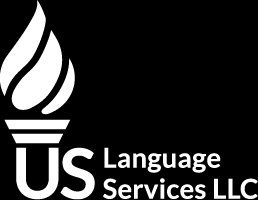How to Work in the U.S. As a Foreign-Educated Teacher

Teaching is a rewarding career for many, and working as a teacher in the United States provides opportunities to meet a diverse set of students and work with individuals from all walks of life. According to the U.S. Bureau of Labor Statistics, teaching is a profession with plenty of projected growth and decent pay, with the average for teachers of both primary and secondary schools in the U.S. ranging between $30,230 and $102,800; the median annual salary for teachers falls around $61,250. If you received your teaching education in a foreign country, you may be wondering how to move your profession to the United States and take advantage of these benefits. Our guide gives you information on this process and answers your important questions like:
- What Is the Process for Working in the U.S. As a Foreign-Educated Teacher?
- How Much Does It Cost to Work as a Foreign-Educated Teacher in the U.S.?
- How Long Does It Take To Work as a Foreign-Educated Teacher in the U.S.?
- Are There Any Restrictions to Working as a Foreign-Educated Teacher in the U.S.?
- What Are the State-Specific Requirements for Foreign-Educated Teachers?
- What Are the Immigration Requirements for Foreign-Educated Teachers?
- Where Can I Get a Certified Translation?
What Is the Process for Working in the U.S. As a Foreign-Educated Teacher?
This process involves several steps that make sure your foreign education meets U.S. education requirements and that you are properly licensed to teach in your chosen state; you may also need to obtain certifications for the specific subjects you teach. It’s important to know which state you are aiming to work in ahead of time, as specific state licensing and teaching certification requirements do vary. The general steps to working in the U.S. as a foreign-educated teacher include the following:
- Your first step will be ensuring that you have obtained the basic education requirements for U.S. teachers. You will need at least a bachelor’s degree, but some states do require a master’s degree in the subjects or specializations that you wish to teach. You will need to prove that your foreign credentials meet their U.S. equivalent by obtaining a credential evaluation; selecting an organization to conduct this from either the National Association of Credential Evaluation Services (NACES) or the Association of International Credential Evaluators (AICE) will give you the most accurate evaluation possible.
- Once you’ve made sure that you meet all basic education requirements, you will need to show proof that you have completed a teacher preparation program that meets your chosen state’s requirements. You may be able to complete this in your home country, but you might need to complete a U.S.-based program depending on your chosen state. You should also note that your state’s teacher licensing board will also dictate if you need additional practice or supervised working hours before you are eligible to work as a teacher independently.
- After meeting the teacher preparation program requirements as needed, you will need to double-check your state’s examination requirements. State-specific exams are often required, and you may need to complete additional teacher certifications or parts of the Praxis Subject Tests for teachers. Your chosen state’s licensing board will give you more detailed information about what you must complete before you are eligible to apply for a license.
- In some states, you might need to demonstrate your proficiency in English before you are eligible to be licensed as a teacher. You can do this by taking either the Test of English as a Foreign Language (TOEFL) or the International English Language Testing System (IELTS) and submitting your test scores as part of your state license application where required.
- One of the most important steps in this process is applying for licensing with your chosen state’s teacher licensing board. The U.S. Department of Education provides an easy-to-navigate directory that provides you with the contact information for each state’s licensing board and information for becoming licensed in U.S. territories and commonwealths. You can access more detailed information on application procedures and additional state requirements using this tool.
- The final step in becoming a foreign-educated teacher in the U.S. is making sure that you obtain a visa or green card that lets you immigrate to your chosen state and work without restrictions. Visiting the United States Citizenship and Immigration Services (USCIS) website is a great place to start this process, and you may also want to consult an immigration lawyer for in-depth guidance on this process.
It’s important to note that the U.S. Department of State encourages foreign-educated teachers to work in the U.S. as part of cultural and exchange programs. You may find support as you work to become a teacher in the U.S. by applying for a program directly through a U.S. government program such as BridgeUSA.
How Much Does It Cost to Work as a Foreign-Educated Teacher in the U.S.?
The costs of working as a foreign-educated teacher in the U.S. include the costs of obtaining a credential evaluation, state-specific examinations and the Praxis Subject Tests where required, licensing fees, and immigration fees. If you need to complete additional education requirements, this cost may increase, and you must also factor in the cost of immigration which is typically the most expensive part of the process. Overall, you should set aside a few thousand dollars to complete this process, as most tests will cost a few hundred each to register and prepare for, teaching licenses are typically several hundred dollars, and immigration can cost anywhere between $500 and $1500 or more for an application, not including legal assistance.
How Long Does It Take To Work as a Foreign-Educated Teacher in the U.S.?
Becoming a foreign-educated teacher in the U.S. takes a few years on average. The longest part of this process is immigration, and depending on the type of visa you apply for and your specific situation, this may take between 6 months and 2 years to complete. State licensing takes a few months on average as you gather all of your documents and credential evaluations, and this process might be extended if you need to complete additional education requirements, teacher preparation programs, or prepare for state-specific examinations. Overall, expect this process to take between 1 and 3 years to complete.
Are There Any Restrictions to Working as a Foreign-Educated Teacher in the U.S.?
Once you have verified that you have met all education, experience, and immigration requirements, and you have become licensed to teach in your chosen state and met any additional state requirements, you will be eligible to work as a foreign-educated teacher in the United States without restrictions. Make sure that you stay up to date with any ongoing requirements, such as continuing education, state license renewal, and immigration requirements so that you can easily continue your practice as a teacher without interruptions.
What Are the State-Specific Requirements for Foreign-Educated Teachers?
States handle licensing for teachers individually, so you will need to consult with the licensing board of the state that you wish to work in for more detailed application information. In general, state-specific requirements for teachers will include submitting a license application with proof of adequate teaching education, experience, and examination results in addition to passing separate state certification exams and obtaining state-specific certifications in the subject that you wish to teach. You will also likely need to pay licensing fees and commit to maintaining your license via ongoing education and license renewal tasks. Navigate to your state’s licensing board using this directory to find out more about basic teacher requirements and applicable state-specific licensing information.
What Are the Immigration Requirements for Foreign-Educated Teachers?
There are several different visa options that foreign-educated teachers may be able to choose from in order to legally move to their chosen state and start practicing in the U.S. The most popular visa options for teachers include the J-1 visa, H-1B visa, and TN NAFTA Professionals visas. You might also be able to obtain employment-based visas or the O-1 visa depending on your specific situation and the subjects that you specialize in teaching. If you are confused about which visa to select, you should consult with an immigration lawyer so you can better understand your immigration options and how to get started with this process.
Where Can I Get a Certified Translation?
A reliable, accurate certified translation of your original academic documents and teaching certifications is often essential to obtain as you work towards becoming a foreign-educated teacher in the U.S. You will most likely need your certified translation during every step of the process of certifying your education and experience, applying for state licensing, and even submitting immigration applications. Visit our online store for all of your certified translations need to take care of this important step. We translate documents such as:
- Diplomas
- Academic transcripts
- Business licenses and certifications
- Resumes and employment records
- Birth certificates
Guaranteed Acceptance
All our certified to English translations are accepted by the USCIS. Our translations follow the guidelines established by the USCIS and are also accepted by educational institutions.
Most Requested Documents
FAQs
You can order most translations 24 hours a day, 7 days a week through our online store. For large projects (more than 20,000 words or 50 pages), please request a quote.


